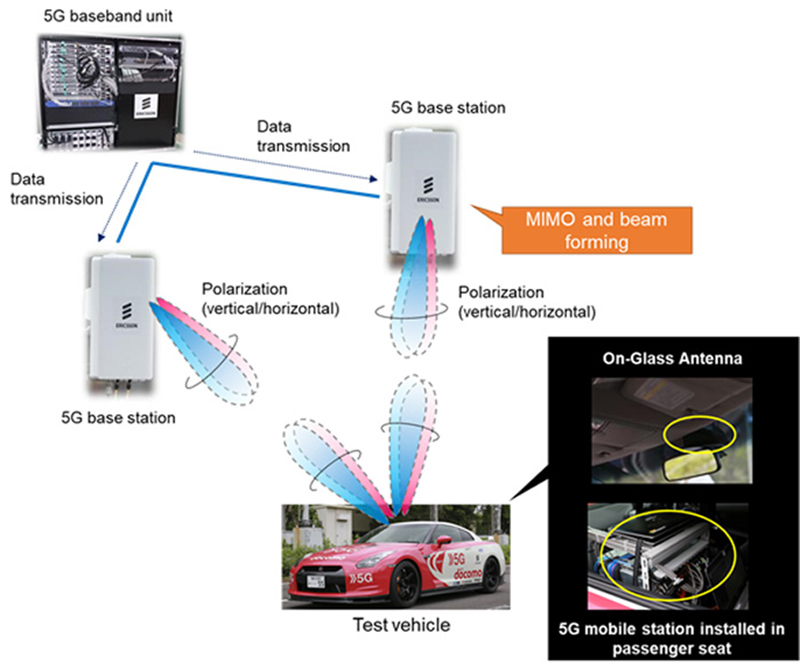
On July 25, 2018, NTT DoCoMo and AGC achieved the world's first 8 Gbps 5G communications with a fast-moving vehicle equipped with vehicle glass mounted antenna (On-Glass Antennas) in a field trial conducted in conjunction with Ericsson Japan. Fast moving vehicle 5G communication relied on 5G 28 GHz band compatible On-Glass Antennas designed and developed by AGC. The antennas are not easily seen from the exterior and can be installed on glass surfaces without affecting the vehicle design.
Radio waves in the 28 GHz band have a large propagation loss and have difficulty propagating over long distances. By installing an On-Glass Antenna on the vehicle, radio waves above 6 GHz can be transmitted and received using the "beam forming function", which concentrates radio waves in a specific direction, and the "MIMO function", which improves communication speed by simultaneously transmitting different data from multiple antennas. This allows stable, high-speed communications even for vehicles in operation.
For this fast moving vehicle 5G communication field trial, 5G high-speed communications using both the beam forming function and the MIMO function was performed with a vehicle equipped with On-Glass Antennas. The trial was held at the National Institute for Land and Infrastructure Management in Ibaraki Prefecture, Japan. While moving at high speeds of approximately 100 km/h, a maximum communication speed of 8 Gbps was achieved, and a maximum of 11 Gbps was achieved at a speed of approximately 30 km/h, confirming that high-speed in-vehicle communications in the 28 GHz band can be achieved by utilizing On-Glass Antennas.
DoCoMo, AGC, and Ericsson Japan will continue working toward utilizing 5G in various environments including in-vehicle communication modules, etc., aiming to see 5G connected cars become a reality.